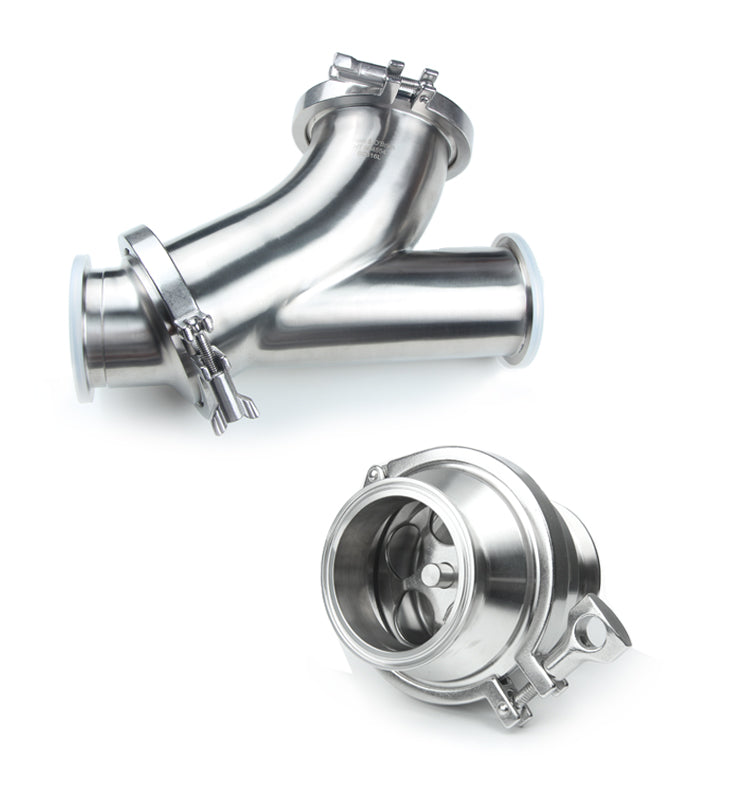In industries with high hygiene requirements, such as food, beverage, pharmaceuticals, and cosmetics, maintaining the cleanliness of fluid systems and preventing cross-contamination is crucial. Sanitary check valves are essential components that effectively prevent fluid backflow, ensuring product quality and safety during production. But how do you choose the best sanitary check valve for your specific application? This article provides a comprehensive guide.
What is a Sanitary Check Valve?
A sanitary check valve is a valve specifically designed for environments requiring high cleanliness. Its primary function is to prevent fluid from flowing backward in the system. These valves are typically made of high-quality stainless steel, such as 316L, and feature smooth internal surfaces and low retention designs to ensure easy cleaning and sterilization, meeting CIP (Clean-In-Place) and SIP (Sterilize-In-Place) process requirements.
Key Considerations When Choosing a Sanitary Check Valve
When selecting a sanitary check valve, consider the following key factors to ensure optimal performance and reliability in your specific application:
-
Material and Corrosion Resistance
- Sanitary check valves are typically made from 304 or 316L stainless steel. 316L stainless steel is preferred for its superior corrosion resistance, especially in applications involving acidic or corrosive media. If your fluid contains corrosive components or if the valve needs to operate in high-temperature environments, 316L is the better choice.
-
Valve Type
- Lift Check Valve: This type of check valve is typically used in vertically installed piping systems. The fluid flow lifts the valve disc, and when the flow stops or reverses, the disc drops back into place due to gravity or spring force, closing the valve. This design is suitable for applications with lower flow rates.
- Swing Check Valve: This valve has a hinged valve disc that swings open when the fluid flows in the forward direction and closes when the fluid flows backward. It is ideal for systems with higher flow rates and velocities.
-
Installation Position and Method
- Choosing the appropriate installation method based on your system's design and requirements is crucial. Sanitary check valves can typically be welded, threaded, or clamped onto the piping system. The installation position should ensure that the valve operates properly and is easy to maintain and clean.
-
Fluid Characteristics
- Understanding the viscosity, temperature, and chemical properties of the fluid being handled is essential when selecting the right sanitary check valve. If the fluid is highly viscous or contains particulates, choose a valve designed to handle these challenges to avoid clogging or damage.
-
Cleaning and Maintenance Needs
- Sanitary check valves should be easy to disassemble and clean, and their design should accommodate CIP and SIP requirements. Low retention designs help minimize fluid residues, reducing cleaning difficulties and contamination risks.
-
Compliance with Standards
- Ensure that the chosen sanitary check valve complies with relevant hygiene standards and certifications, such as FDA, 3A, or EHEDG. These standards guarantee that the valve is safe for use in high-hygiene environments.
How to Evaluate Suppliers
Choosing the right supplier is also crucial to ensure you get the best sanitary check valve. When evaluating suppliers, consider the following:
- Quality and Reliability: Check if the supplier's valves undergo rigorous quality control and maintain stable performance even after prolonged use.
- Customer Support: Determine if the supplier offers detailed product information, installation guides, and technical support to ensure smooth installation and operation of the valve.
- Delivery Time and Price: Compare different suppliers' delivery times and prices, and choose one that offers high-quality products at a reasonable price within a suitable timeframe.
Conclusion
Choosing the best sanitary check valve for your application requires a thorough consideration of several factors, including material, valve type, installation method, fluid characteristics, and cleaning and maintenance needs. By carefully evaluating these factors and selecting a reliable supplier, you can ensure that the sanitary check valve you choose not only meets hygiene standards but also provides long-lasting reliability and efficient performance in your specific application. This will help ensure product quality, enhance production efficiency, and reduce the risk of production downtime due to contamination or equipment failure.









